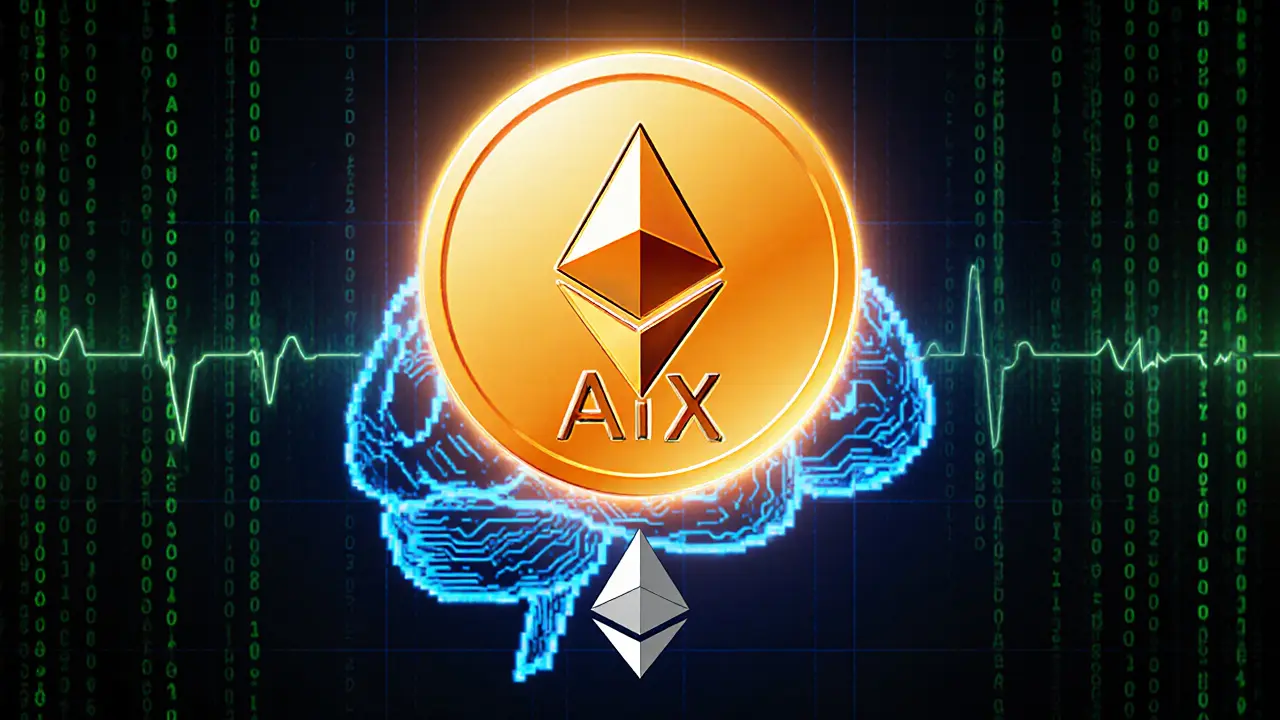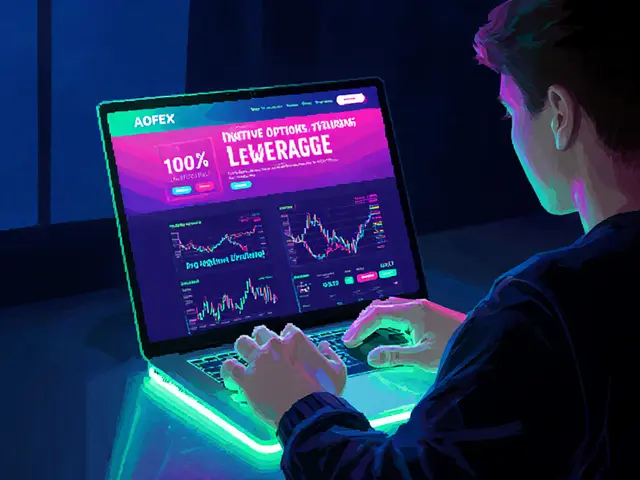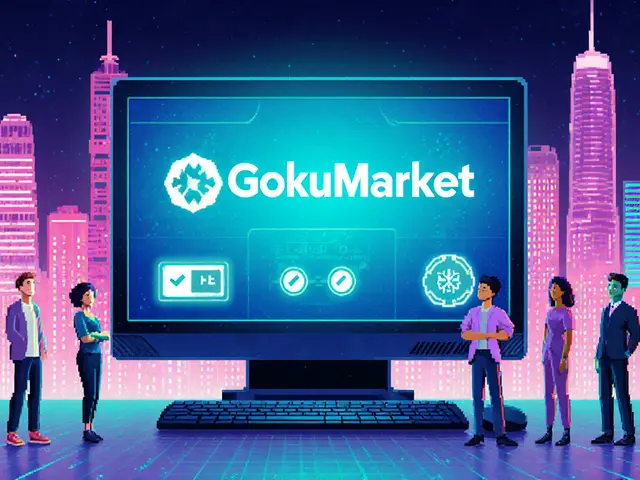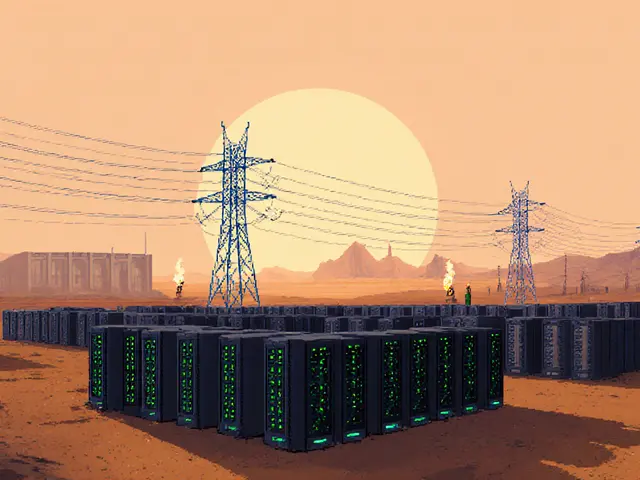AI Crypto Project Evaluator
AI Project Evaluation Tool
Evaluate AI cryptocurrency projects using the 6 key criteria from industry best practices. This tool helps identify potential red flags and distinguish viable projects from those with only hype.
Results
Key Takeaways
- AiX was launched in 2017 as an ERC‑20 utility token for an AI‑driven brokerage platform.
- The project promised a buy‑back scheme funded by up to 40% of trading commissions.
- Unlike modern AI‑crypto projects, AiX never delivered a working product or active market data.
- Market analysis attributes its failure to missing MVP, weak community, and lack of clear AI‑use case.
- Investors should vet AI tokens against criteria such as live code, transparent tokenomics, and active developer support.
When you hear the name AiX crypto coin, you might picture a cutting‑edge blend of artificial intelligence and blockchain. The reality is more nuanced. Below we break down exactly what AiX is, how the team said it would work, why the token vanished from exchanges, and what lessons it offers for anyone eyeing AI‑focused cryptocurrencies.
What Is AiX?
AiX is a cryptocurrency token launched in 2017 under the banner of AI Exchange. According to the project’s September 2017 whitepaper, the token was meant to serve as a utility medium granting access to an AI‑powered inter‑dealer brokerage (IDB) platform. The team claimed “decades of combined expertise” in both finance and AI, targeting a $4.5billion annual revenue slice held by the top three traditional brokers.
The token’s primary promise was two‑fold: reduce trading costs for institutional users through AI‑driven order routing, and implement a buy‑back mechanism where the company would repurchase tokens using a portion of its commission revenue.
How AiX Said It Would Work
The whitepaper outlined a simple flow:
- Clients acquire AiX tokens and hold them in an Ethereum‑compatible wallet.
- Holding a minimum token balance unlocks access to the AI‑enabled brokerage dashboard.
- Every trade executed on the platform generates a commission; up to 40% of that commission is earmarked for buying back AiX tokens on the open market.
In theory, the buy‑back created a demand‑driven price floor, while the AI layer “drastically reduced trading costs.” The token itself was positioned as a utility rather than a speculative asset.
Technical Specs
The token was built as an ERC‑20 on the Ethereum blockchain, meaning it inherited Ethereum’s security model and could be stored in any standard wallet such as MetaMask or Ledger. The whitepaper mentioned a fixed maximum supply but never disclosed the exact number, a glaring omission compared with today’s standard tokenomics disclosures.
Key technical attributes:
- Standard: ERC‑20
- Network: Ethereum (public mainnet)
- Supply: Fixed, exact figure undisclosed
- Buy‑back source: Up to 40% of trading commissions
Because the contract address was never listed on major explorers, verification of these attributes remains impossible, a red flag for any prudent investor.
Market Performance & Current Status
Despite the lofty whitepaper, AiX never gained traction on major exchanges. As of 2023, both CoinGecko and CoinMarketCap reported zero active trading data, effectively labeling the token as dormant. The original domain (ai‑x.io) redirected to an unrelated site by late 2021, and community channels on Reddit or Twitter have been silent for years.
Analysts at Binance Research note that a lack of on‑chain activity, missing GitHub repositories, and no verifiable smart‑contract deployments are strong signals of project abandonment. The token’s market cap, when it existed, never breached a few million dollars and quickly evaporated as investor interest waned.
How AiX Stacks Up Against Modern AI‑Crypto Projects
To understand why AiX fell behind, compare it with three AI‑focused tokens that are still active in 2025.
| Metric | AiX | Fetch.ai (FET) | SingularityNET (AGIX) | Ocean Protocol (OCEAN) |
|---|---|---|---|---|
| Launch Year | 2017 | 2019 | 2017 | 2017 |
| Blockchain | Ethereum (ERC‑20) | Ethereum (ERC‑20) + Cosmos | Ethereum (ERC‑20) | Ethereum (ERC‑20) |
| Active Mainnet | No | Yes | Yes | Yes |
| Market Cap (Jan2025) | - (inactive) | $320M | $210M | $180M |
| Developer Community | None | ~4,500 developers | ~3,200 developers | ~2,800 developers |
| Key Use‑case | AI‑brokerage (unrealized) | Autonomous economic agents | AI service marketplace | Decentralized data exchange |
The table makes the gap obvious: AiX lacks an operational mainnet, community, and market cap, while its peers boast live networks, clear use‑cases, and sizable ecosystems.
Why AiX Failed - A Deep Dive
Several factors converged to sink AiX:
- Missing Minimum Viable Product (MVP): The whitepaper promised AI‑driven order routing but never released a working prototype. Outlier Ventures’s 2024 AI thesis observed that projects which “slapped AI on a whitepaper” without delivering functional tech vanished by 2020.
- Unclear Tokenomics: No exact max supply, no transparent allocation breakdown, and a vague buy‑back clause made investors skeptical.
- Community Vacuum: No Reddit threads, Telegram groups, or Twitter activity after 2018. Community sentiment is a crucial health indicator for crypto projects.
- Regulatory Blind Spot: Targeting the inter‑dealer brokerage market meant confronting strict financial regulations. The project never disclosed licensing or compliance steps, raising red‑flag concerns for institutional partners.
- Competitive Landscape: By the time AI‑crypto gained traction in 2020, projects like Fetch.ai and SingularityNET already had live codebases, developer grants, and partnership pipelines.
In a CoinDesk interview, Dr. Ben Goertzel, chief scientist of SingularityNET, warned that “many early AI‑token projects lacked actual AI expertise and treated AI as a buzzword rather than solving real technical challenges.” AiX fell squarely into that cautionary tale.
How to Evaluate an AI‑Focused Cryptocurrency
If you’re considering an AI‑crypto token, use this quick checklist:
- Live Codebase: Verify a public repository (GitHub, GitLab) with recent commits.
- Transparent Tokenomics: Exact supply, allocation, vesting schedules, and clear utility.
- Active Community: Look for Discord/Telegram groups with at least a few thousand members and regular AMA sessions.
- Regulatory Compliance: Check for KYC/AML policies if the project targets financial services.
- Real‑World Use‑Case: Identify a concrete problem the AI solves (e.g., data privacy, compute marketplace, autonomous agents).
- Partner Ecosystem: Partnerships with reputable firms (exchanges, cloud providers, academic labs) add credibility.
Applying this framework to AiX would have flagged multiple red flags early - no repo, opaque tokenomics, silent community, and a vague use‑case.
What to Do Next if You Already Own AiX
For the few holders who might still have AiX tokens in a wallet:
- Check the contract address: If you can locate the official ERC‑20 contract on Etherscan, verify whether any recent transfers have occurred.
- Consider swapping: Some decentralized aggregators let you trade obscure ERC‑20 tokens for ETH or stablecoins, though liquidity may be negligible.
- Write‑off for tax purposes: In many jurisdictions, tokens with no market value can be claimed as a loss.
Given the lack of market depth, holding AiX is unlikely to yield returns. Reallocating capital to vetted AI‑crypto projects is a smarter move.
Frequently Asked Questions
Is AiX still tradeable on any exchange?
No. As of 2023, major aggregators and exchanges list AiX with zero volume, and most platforms have removed the token entirely.
What was the promised AI functionality of AiX?
The whitepaper claimed an AI engine would route inter‑dealer trades, cut commissions, and provide real‑time market analytics, but no code or demo was ever released.
Can I still claim a tax loss for AiX holdings?
In many countries, crypto assets with zero market value qualify as a capital loss. Consult a tax professional for local regulations.
How does AiX’s buy‑back model differ from typical tokenomics?
AiX pledged to use up to 40% of its trading commission revenue to repurchase tokens, creating a demand‑side support. Most tokens rely on market speculation rather than a formal buy‑back fund.
What lessons does AiX teach new investors?
Look for live code, transparent supply data, active community, and a real AI problem being solved. If a project only has a glossy whitepaper, treat it with caution.






Jennifer Bursey
October 15, 2025 AT 09:20When you dig into any AI‑crypto project, the first thing to scan is the code repository – a live, public repo is the lifeblood of credibility. The AiX token had zero commits, no open‑source artifacts, and that alone shouts “white‑paper hype.” Pair that with opaque tokenomics and you’ve got a textbook case of a red‑flag project. In short, treat AiX as a cautionary tale and apply the same ruthless checklist to every newcomer.
Maureen Ruiz-Sundstrom
October 19, 2025 AT 09:20The AiX fiasco exemplifies the perils of branding over substance; a glossy whitepaper cannot substitute for a working prototype. Its promised AI‑driven brokerage never materialized, rendering the entire value proposition fictitious. Moreover, the absence of transparent supply data betrays a fundamental breach of investor trust.